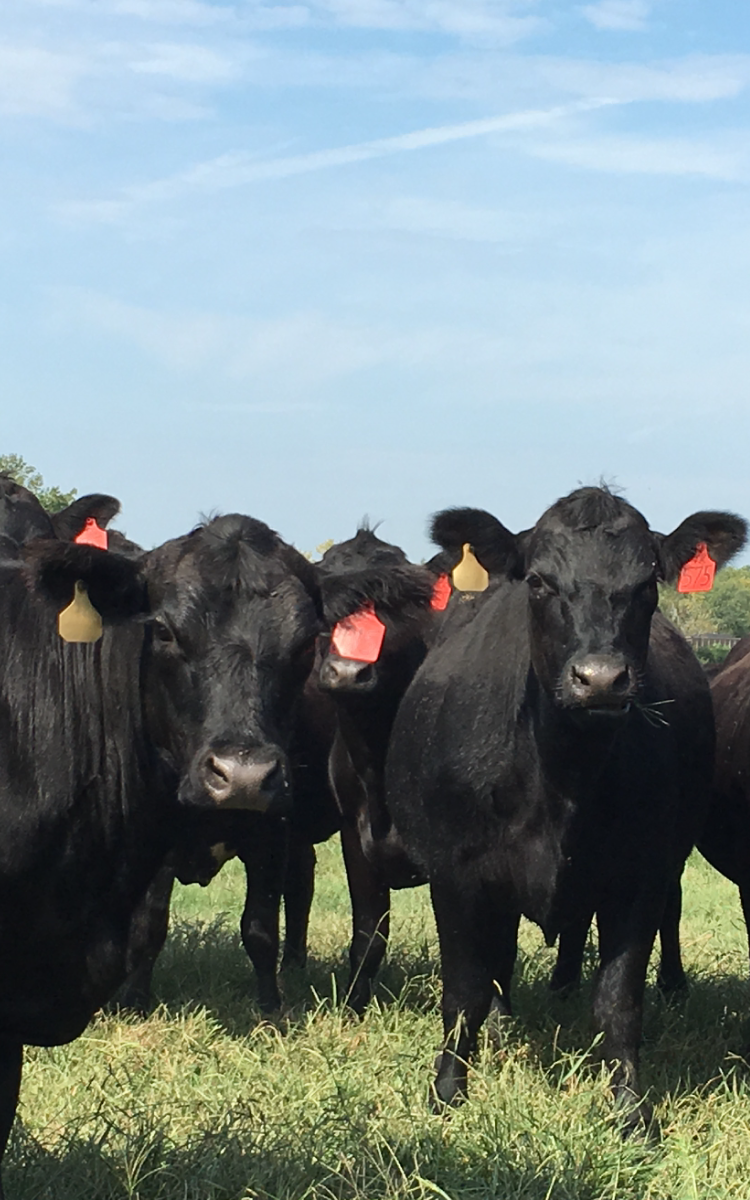

Dr. Lew Strickland
Associate Professor and Extension Livestock Veterinarian
Department of Animal Science
P: 865-974-3150
Adapted from OSU ANSI 3355
Anywhere there is moist wet abrasive environmental conditions; there is a problem with foot rot. The incidence of foot rot varies according to the weather, season of the year, grazing periods. The disease incidence may increase up to 25 percent in high‐ intensity beef or dairy production units depending on housing systems. Approximately 20 percent of all diagnosed lameness in cattle is actually foot rot.
Causes
Cause of foot rot can vary. Normally, the skin between the hoofs protects the interdigital space from the outside world, but an injury of some type, mechanical (abrasions caused by rough surfaces rough terrain, hard stalks, and sharp gravel) occurs and continuous exposure to wet conditions results in infection. This perfect storm, if you will, is the typical cause of entrance points for infectious agents. A quite common bacterium known as Fusobacterium necrophorum is the organism most often isolated from infected hooves. The majority of F. necrophorum isolated belong to one of two types (types A or B) which produce toxins that cause necrosis (death) or decay of the infected tissues. F. necrophorum appears to act cooperatively with other bacteria, such as Bacillus, Staphylococcus aureus, Escherichia coli, and Truperella pyogenes, thereby decreasing the infective amount of F. necrophorum necessary to cause disease.
Regardless of the source, once loss of skin integrity occurs, bacteria gain entrance into subcutaneous tissues and begin rapid multiplication and production of toxins that stimulate further continued bacterial multiplication and penetration of infection into the deeper structures of the foot.
Clinical Signs
Foot rot occurs in all ages of cattle, with increased case incidence during wet, humid conditions. Focus attention to areas where cattle congregate. These areas are often crowded and extremely wet from urine and feces deposited as cattle gather around hay bales or in small, shaded areas during hot weather. The first signs of foot rot, following a growth and development period of the organism for a period of five to seven days, are lameness, acute swelling of interdigital tissues, and swelling evenly distributed around the hairline of both hooves. Eventually the interdigital skin cracks open, revealing a foul‐smelling, necrotic, core‐like material. Untreated, the swelling may progress up the foot to the fetlock or higher. More importantly, the swelling may invade the deeper structures of the foot such as the navicular bone, coffin joint, coffin bone, and tendons and result in serious infection.
Diagnosing the Problem
Diagnosis of foot rot is typically made by examination of the hoof, looking at the characteristic signs of sudden onset of lameness (usually one limb), swelling between the digits (claws), and separation of the interdigital skin. A potential problem is there are other conditions that can cause lameness in cattle. This can be easily mistaken for foot rot and would require different treatment. These include interdigital dermatitis, sole ulcers, sole abscesses, sole abrasions, infected corns, fractures, septic arthritis, and inflammation or infection of tendons and tendon sheaths. All of which generally only involve one claw of the foot and not the areas of skin or soft tissues between the toes or claws.
Treatment
Treatment of foot rot is usually successful, especially when instituted early in the disease course. Treatment should always begin with cleaning and examining the foot to establish that lameness is actually due to foot rot. Some very mild cases will respond to topical therapy and supportive care only. Most cases require the use of systemic antimicrobial therapy. I typically recommend a long-acting antibiotic to properly penetrate tissues and lessen trips through the chute. However, consult with your local veterinarian on recommended antibiotics and dosages for each situation.
Affected animals should be kept in dry areas until healed, if possible. If improvement is not evident within three days to four days, it may mean the infection has invaded the deeper tissues. Infections not responding to initial treatments need re‐evaluation by your veterinarian in a timely manner. In the more severe cases, management of the animal will be between salvaging for slaughter (following drug withdrawal times), claw amputation, or in valuable animals, claw‐salvaging surgical procedures.
Prevention
If you have been in any of my Master Beef meetings, you have heard me say “the best offense is a good defense”, this is the case here as well. Center preventive measures on the prevention of mechanical damage to the foot as caused by sharp gravel, brush, stubble, and minimizing the time cattle must spend standing in wet areas. Other preventive measures presently used include the use of footbaths (most often used in confinement beef or dairy operations, 10 percent Zinc Sulfate – 16 lbs per 20 gallons of water or 10 percent Copper Sulfate – 16 lbs. per 20 gallons of water). Footbaths are not commonly very practical in open pasture as the labor and difficulty of moving cattle through them prohibit their use.
When cattle are moderately to severely deficient in dietary zinc and iodine, there may be an increased incidence of foot rot on that operation. Adequate dietary zinc/iodine should be provided in the form of a well balance trace mineral nutritional program to help minimize foot rot and other types of lameness. As a word of caution, the required levels of zinc/iodine and the toxic levels are very similar. Adding additional zinc and or iodine above the recommended levels may result acute or chronic toxicity of cattle.
A commercial vaccine approved for use in cattle as a control for foot rot is available. Reported results by producers and veterinarians have been mixed from their use of this product, and controlled studies have not been conclusive in the efficacy of the vaccine.
Take Home Message
Foot rot is a costly frustrating condition, which results in extra labor and expense on your operation. Keep in mind that it is necessary to have a break in skin integrity for foot rot to occur, and early intervention results in quicker response to treatment. The most important preventive measures are centered on the protection of interdigital skin health. Close detail to environmental conditions and feeding a well‐balanced dietary program nutrition are key in prevention. Consult with your veterinarian or Extension agent on a prevention program for your farm. If you have any questions, please feel free to contact me at, lstrick5@utk.edu, or 865‐974‐3538.
